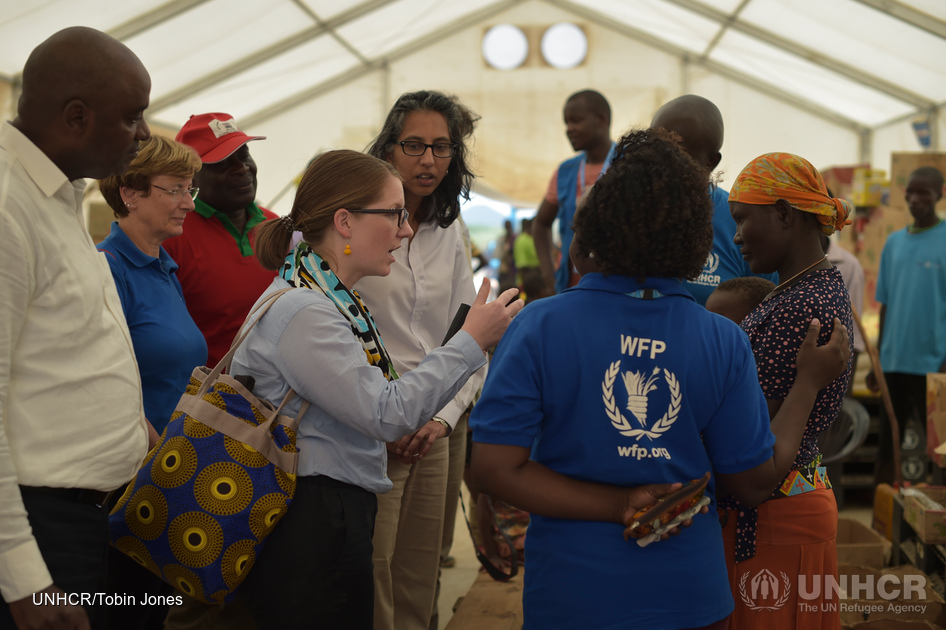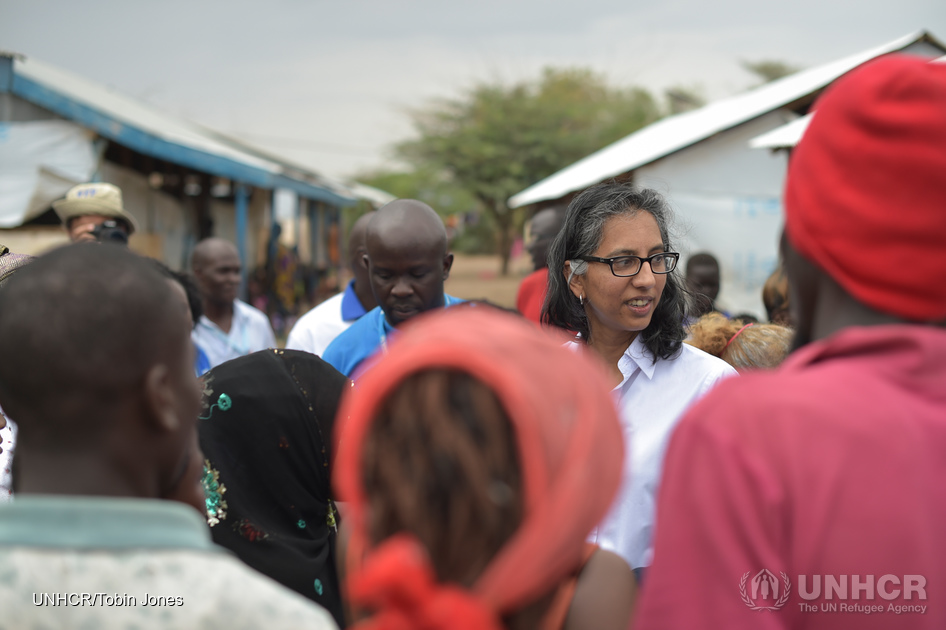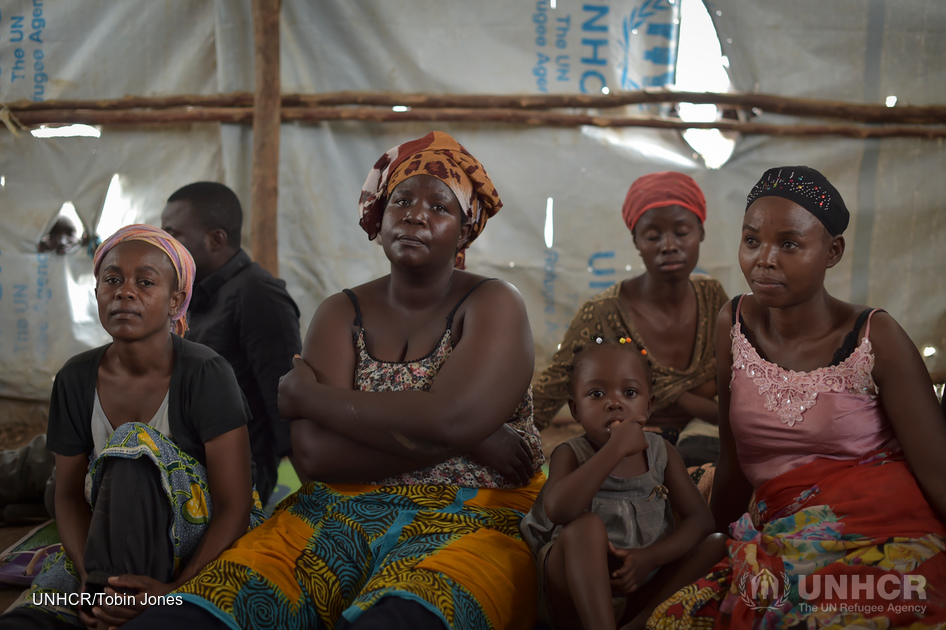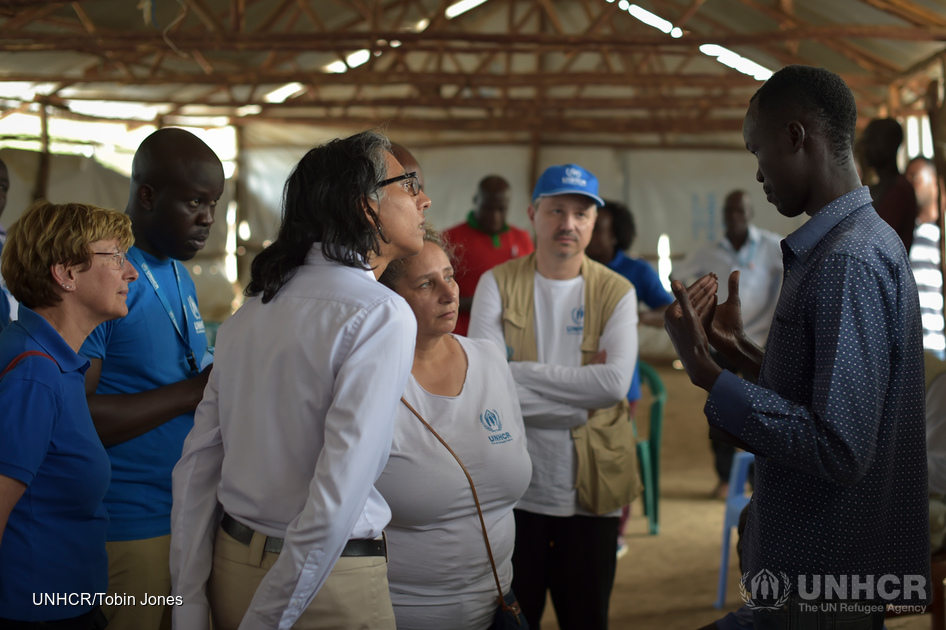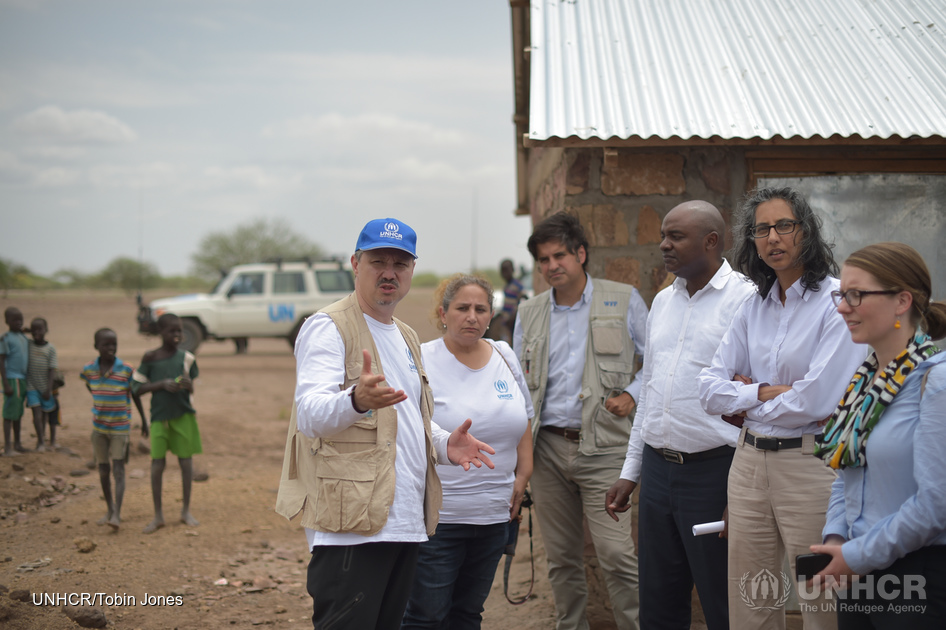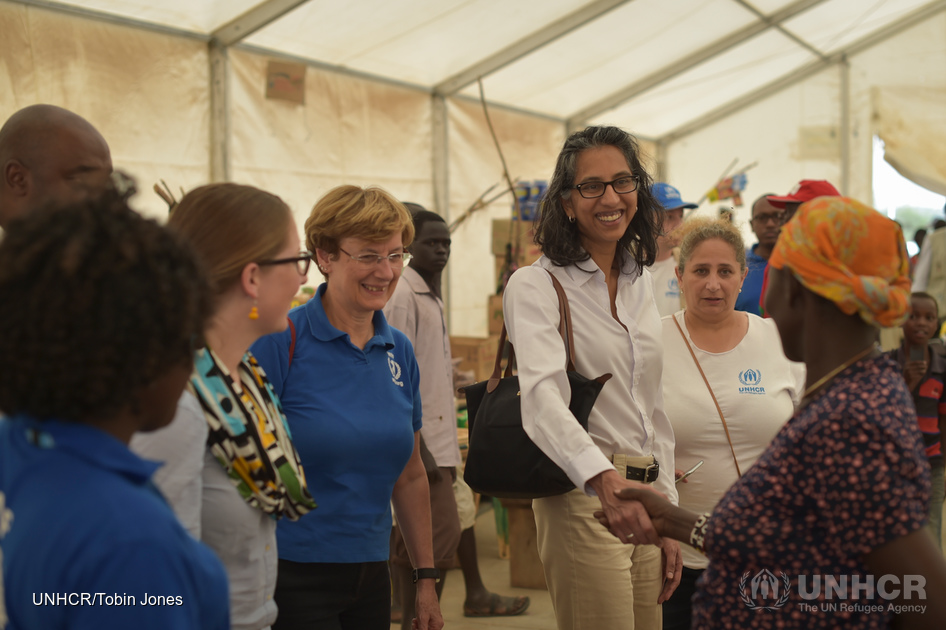Australian mission visits Kakuma camp and Kalobeyei Settlement

Niamh Dobson, Second Secretary (Somalia/Humanitarian) of Australia's Department of Foreign Affairs and Trade (DFAT), meets with newly arrived refugees at Kakuma Refugee Camp in Kenya. ; Kakuma Refugee Camp was established in 1992 and is now home to almost 180,000 people from eighteen different countries. In recent years the camp has seen a recent influx of refugees fleeing from the war in South Sudan.
Kakuma and Kalobeyei (UNHCR) – The Assistant Secretary of Australia’s Department of Foreign Affairs and Trade (DFAT), Gita Kamath, and Second Secretary (Somalia/Humanitarian) of Australia’s Department of Foreign Affairs and Trade (DFAT), Niamh Dobson, visited Kakuma refugee camp and Kalobeyei integrated settlement to familiarize with UNHCR and WFP activities in the operation.
The mission, accompanied by Word Food Programme’s (WFP) Country Director and the UNHCR’s Head of Office – Kakuma Sub-Office Mr. Tayyar Sukru Cansizoglu, visited the Reception Centre in Kakuma refugee camp as well as the Kalobeyei Integrated market where they interacted with newly arrived refugees and traders from host and refugee community respectively.
The mission also observed the prototype permanent shelters constructed from Turkana Stone at Kalobeyei settlement.

